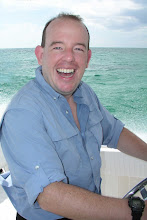Monday, October 10, 2005
Accidents+and+Annual+Dives
Mark Townsend in Houston
Sunday September 25, 2005
The Observer
Experts who have studied the US navy's cetacean training exercises claim the 36 mammals could be carrying 'toxic dart' guns. Divers and surfers risk attack, they claim, from a species considered to be among the planet's smartest. The US navy admits it has been training dolphins for military purposes, but has refused to confirm that any are missing.
Dolphins have been trained in attack-and-kill missions since the Cold War. The US Atlantic bottlenose dolphins have apparently been taught to shoot terrorists attacking military vessels. Their coastal compound was breached during the storm, sweeping them out to sea. But those who have studied the controversial use of dolphins in the US defence programme claim it is vital they are caught quickly.
Leo Sheridan, 72, a respected accident investigator who has worked for government and industry, said he had received intelligence from sources close to the US government's marine fisheries service confirming dolphins had escaped.
'My concern is that they have learnt to shoot at divers in wetsuits who have simulated terrorists in exercises. If divers or windsurfers are mistaken for a spy or suicide bomber and if equipped with special harnesses carrying toxic darts, they could fire,' he said. 'The darts are designed to put the target to sleep so they can be interrogated later, but what happens if the victim is not found for hours?'
Usually dolphins were controlled via signals transmitted through a neck harness. 'The question is, were these dolphins made secure before Katrina struck?' said Sheridan.
The mystery surfaced when a separate group of dolphins was washed from a commercial oceanarium on the Mississippi coast during Katrina. Eight were found with the navy's help, but the dolphins were not returned until US navy scientists had examined them.
Sheridan is convinced the scientists were keen to ensure the dolphins were not the navy's, understood to be kept in training ponds in a sound in Louisiana, close to Lake Pontchartrain, whose waters devastated New Orleans.
The navy launched the classified Cetacean Intelligence Mission in San Diego in 1989, where dolphins, fitted with harnesses and small electrodes planted under their skin, were taught to patrol and protect Trident submarines in harbour and stationary warships at sea.
Criticism from animal rights groups ensured the use of dolphins became more secretive. But the project gained impetus after the Yemen terror attack on the USS Cole in 2000. Dolphins have also been used to detect mines near an Iraqi port.
We didn't notice any concentrations of red algea!
Photos, Panoramics, and more to come.
Tuesday, October 04, 2005
Underwater Photomerged Wrecks
Now I can't wait to try this on the reef or at datura, if the vis improves and seas calm!
